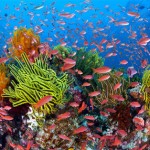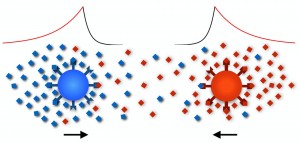The decision tree model takes the following theoretical bases.

The three layers
The neural response system of humans exist of the following three layers. (You might recognize something of the Triune brain in this, though I can honestly say, I didn’t know about that until I was searching for an image for this article: ‘Three layers of brain’)
- Instinctive behavior
Either by genetic blueprint or attained through learning, any organism will adapt to recurring patterns to prevent it from danger. The genetic part is of course hard to change, but the ‘tree’ of choices (I call it the decision tree), the response mechanism of most mammals is automated. Meaning, if something gives an impulse, especially repeatedly, that causes a positive or negative reaction to the nervous system, it will become an instinctive behavior to move to or from such stimulus. - Emotional behavior
Mammals and especially primates (being very recognizable to us), being differentiated in group sizes and survival mechanisms because of that, have empathic abilities to survive in social groups. But we also see emotional behavior in strong generational cohesion. Where offspring is heavily dependent on parents, we see the equivalent of our own emotions within such ‘family’. These emotional behaviors have different reasons. 1. they cause automatic bonding, dependency. 2. they cause mimicking of behavior (we have seen this behavior between species even, remember the stories of Tarzan, or Romulus and Remus?). 3. they set a path for pattern recognition within the nervous system. Certain key values which change with each generation to ensure possible survival. The emotional layer, can be seen as a ‘neural’ filter level. - Cognitive behavior
With awareness comes the growth to conceptualization in communication. Because we are instinctive, emotional beings, but also self aware and sometimes differ in meaning of emotion, we need a way to explain when an emotional behavior is not meant as a threat, etc. You could call it a protocol equivocation behavior. These concepts are starting with leveling of emotional responses between the self and others (independent of species), but evolve through a process of emotional impulses to stimuli and responses within relations and our interactions with the world around us into cognitive structures of words, representations and a general worldview.
Intrinsic accumulation
The layers work accumulative, where instinctive is built up from two different influences: Genetic inheritance and developmental alteration (learning). The emotional layer is a constructed layer depending on the complexity of the organism and the amount of instinct branches. The cognitive layer depends on both underlying layers but (as we can see in different human individuals) can work independent of them.

Current, tide and flow
All processes within the organism (whether human or otherwise) are based on simple building blocks that exist in
nature. The physical economy depends on the existing concentrations of minerals within the available solution (water). This does not ends with the intestines, blood-vessels and muscle tensions of an organism, but also in more intrinsic parts and effects within the body. Even the most sophisticated patterns like our nervous system are build on these same principles.

Micro, Meso and Macro nature and culture
As well as the building blocks, the development and processes of both nature, species and culture (social extension of groups of species), are based on such equal principles. This means that taking the basic evolution of a natural process, this can be translated into a process within a species, as well as into the working of a social construction.
Fear first, eat later
All and every behavior that is correctly addressed, can be retraced to the most basic stimuli and responses of nature. All and every organism is in base principle primed to prevent harm to self. Instinct is based on the equivalent of fear, all the way to the first ancestral organism. In this progression, all instincts based on survival have the initial response to the digestion of food.
Be neutral not shallow
All processes in nature, as well as within organisms (if you have read the above correctly this is a no brainer for you), seek a neutral shift. This means that concentrations are diffused, levels are equalized.



